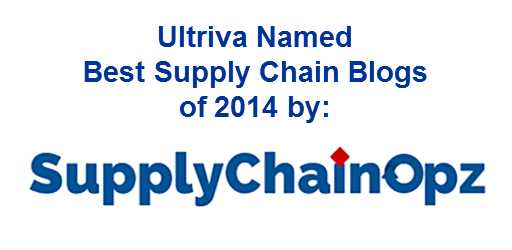Integrating Supply Chain Execution Solutions for Real-Time Visibility to Leverage MRP/ERP Investments
During the last decade, I have personally visited over 150 manufacturing facilities worldwide to help manufacturing companies collaborate with suppliers and gain true supply chain visibility. Due to all this first-hand knowledge, it was a surprise to read Lora Cecere’s recent Forbes magazine article titled Bumps, Cracks and Opportunities reporting that large manufacturing companies, having spent a fortune on MRP systems (in this case SAP and JDA), still use spread sheets and other patches to get through the day. Cecere reports she has dealt with nine companies in one week alone who had to augment MRP forecasts. She shares how companies explained that they start using spread sheets after the forecast goes awry, and that many of the companies with whom she is working are not even using the costly MRP systems for supply chain planning.
 Forbes Article Suggests Planning Limitations of SAP and JDA
Forbes Article Suggests Planning Limitations of SAP and JDA
Cecere reports that for SAP users, the system integrates well, as expected, but for planners, the system does not work well at all. I have seen it many times over the years, a manufacturing company has an MRP in place, and can easily do a forecast. But like the weather, forecasts are hard to predict and can change. When changes occur, such as a scheduled production taking longer, or parts not being shipped on time, the MRP is not able to see these changes, nor take them into consideration. For JDA users, Cecere suggested users have been so frustrated they have migrated to SAP.
The takeaway from this article is that the big MRPs do not allow visibility into the supply chain.
Sure, they can do supply chain planning well, but supply chain execution is required. To execute, a supply chain planner, along with suppliers and customers, must see what is happening. A software platform that allows them to see a single version of truth, in real time, is the only way to optimize a supply chain. Many moving data points must be taken into account before intelligent action can be taken. If supply chain professionals cannot see the data, then how can action be taken? Recently I asked a supply chain professional, who was frustrated with her incorrect MRP forecasts, how she knows how much inventory she is carrying? She answered by telling me she leaves her office and goes to the shop floor to count. Lack of real-time inventory visibility is still pervasive today.
This lack of visibility is seen regularly at larger companies which purchase an enterprise “one-size-fits-all” system. The ERP or MRP vendors promise to tie together disparate systems. And it to some degree it accomplishes that task. Where most MRP systems fall down is extending outside the four walls of a factory. Today’s supply chains are complex, with thousands of SKUs (parts) and suppliers physically far away. Increasingly, suppliers are located in various countries, resulting in less predictable transit times. Supply chain professionals lack real-time information about the location and status of shipments; perhaps the parts are stuck in customs, sitting in a warehouse, on a truck, or at the dock.
A final point Cecere argues is that big MRP systems like SAP and JDA are “hampered by maintenance upgrades and legacy board issues.” Her inference is that cloud-based supply chain management systems do not need a lot of maintenance or even IT support as is required by on-premises, installed solutions. Software that can be utilized in a web-based browser makes it easier for supply chain partners to collaborate, since there is no need to install software or future upgrades.
Ultimately the role of Supply Chain Execution solutions is not mutually exclusive of ERP or MRP systems. Great investments have been made in these technologies and the key is to leverage those data and information to achieve supply chain visibility.
The answer is ERP/MRP AND Supply Chain Execution solutions.
Narayan Laksham, Founder of Ultriva



